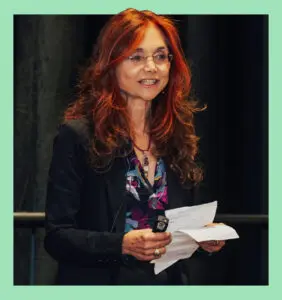Compared to other countries, Canada is sitting pretty comfortably when it comes to seniors’ basic needs for food, shelter, clothing and access to healthcare being met. The country has a universal healthcare system, the federal government recently announced an investment of $198.6 billion over 10 years to help seniors access home care and safe long-term care, and Ontario, the largest province, has a Ministry of Long-Term Care.
But healthy aging means more than just meeting basic needs. It includes continuing to grow and learn, being mobile, maintaining relationships, and contributing to society, says economist and epidemiologist Ritu Sadana. “Whether older people can do this depends on their capacities, and on how their environment supports them to function.”
Healthy aging is a process and doesn’t look exactly the same for all older people. “It’s not as if you tick these five boxes and you’re a successful ager,” Sadana says. For example, some older people need to be surrounded by people to feel happy, while others are perfectly content “walking in the woods and playing the guitar and don’t need a lot of friends,” she says. What we don’t want is older people who are excluded.
Sadana stresses that older people should not be treated like children and told “This is what you need to do” to be healthy. “Rather, we need to listen to individuals and understand what they value and what they want.” We need a holistic approach to shoring up and keeping as long as possible our physical and mental capacities – everything that keeps our minds and bodies working.
Sadana calls this a “person-centred, integrated” approach to aging and care. And this enables older people to “continue to learn and grow” and make decisions about their health and wellness rather than leaving that to health providers who may be solely focused on disease management. “Even if older people have declining cognitive capacities, they should still be able to make choices with support that are meaningful for them,” she says. “Healthy aging isn’t about being disease-free; it’s about being able to do what you value, in your community.”
That’s why the healthy aging process also involves getting rid of stereotypes about older people – for example, the stooped, cane-wielding, grey-haired grandmother. While an older person may indeed be a grandparent, they are likely much more than that – perhaps an avid hiker, painter, bridge player or cherished part-time worker. There needs to be a concerted action to “tackle ageism,” including how we provide care and value caregivers, Sadana says.
Older people can continue to contribute to society. Those who want to keep working in a job should be encouraged to do so, Sadana says. On the other hand, those with health problems or who are carrying out caregiver duties shouldn’t be expected to keep working. “They’re contributing to society in another way,” she says.

As we near the midpoint of the United Nations Decade of Healthy Ageing (2021 to 2030), Renaissance talked to Ritu Sadana – an economist and epidemiologist who heads the World Health Organization’s work on aging and health and its Secretariat for the Council on the Economics of Health for All, and who was a keynote speaker at RTOERO’s Future of Aging Summit held this past May – to get her take on how Canadian older adults can optimize their health as they age.










